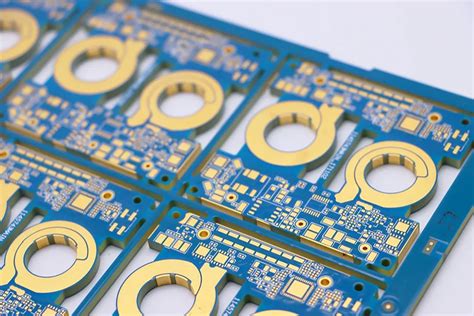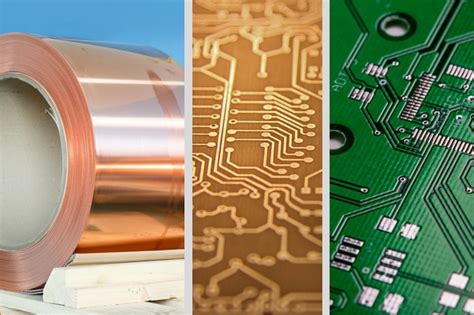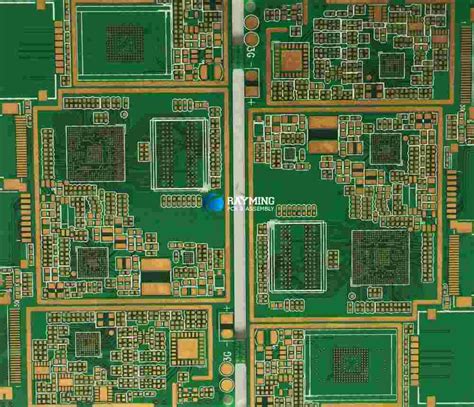Unlocking the Power of Bare Copper PCBs for Your Projects
Key Takeaways
When considering the integration of bare copper PCBs into your projects, it’s essential to understand their transformative role in pcb manufacturing. The conductivity of bare copper is unmatched, allowing for enhanced performance in your designs. As you explore options among various pcb manufacturing companies, look for those that prioritize quality and reliability, as these factors can greatly influence your overall project’s success. Balancing the pcb manufacturing cost with the superior benefits of using bare copper can lead to significant improvements in conductivity and customization efficiency. As you delve deeper into the realm of circuit design, remember that selecting a suitable pcb manufacturing business can provide you with the competitive edge you need to maximize your project’s potential while overcoming common challenges associated with bare copper integration.
Introduction to Bare Copper PCBs: What They Are and Why They Matter
Bare copper PCBs, as the name suggests, feature copper as the primary conductive material on their surface, offering numerous benefits for electrical designs. If you’re looking to take your projects to the next level, understanding bare copper technology is essential. Unlike traditional PCBs that often rely on a layer of solder mask or other coatings, bare copper provides greater electrical conductivity, allowing signals to travel more efficiently. This efficiency can be a game changer for projects that demand high-performance levels.
One reason bare copper matters in the realm of PCB manufacturing is its customization potential. You have the ability to create circuits that are tailored specifically to your project’s needs without the limitations imposed by other coatings. This flexibility not only helps in achieving superior reliability but also substantially affects the PCB manufacturing cost, as fewer materials may be required.
Moreover, cooperating with reputable PCB manufacturing companies enables you to harness advanced technologies and innovative techniques that seamlessly incorporate bare copper into your designs. As you explore this material in your work, always keep an eye out for emerging trends and practices. These may offer insights on overcoming challenges present in the PCB manufacturing business, ensuring that your projects yield optimal results.
With appropriate consideration and a bit of creativity, embarking on designs utilizing bare copper PCBs can ensure your ventures stand out while achieving enhanced performance. Remember: “Investing time in understanding material properties can lead to significant design improvements.”

The Advantages of Using Bare Copper in Your Designs
When it comes to PCB manufacturing, opting for bare copper PCBs can provide several advantages that can significantly enhance the performance of your projects. One of the primary benefits is greater conductivity, as bare copper facilitates superior electrical flow compared to traditional PCBs. This can lead to improved efficiency in your circuit designs, making them more reliable and cost-effective over time.
Bare copper also allows for a high degree of customization, enabling you to modify the PCB manufacturing cost to fit your specific needs without compromising performance. You can tailor the copper weight, thickness, and layout based on your project requirements, creating unique solutions that stand out in functionality and durability.
In addition to customization, bare copper enhances reliability. This is particularly critical in high-frequency applications where signal integrity is of utmost importance. With proper techniques during the PCB manufacturing process, challenges like oxidation can be minimized, thus ensuring that the electrical connections remain intact over time.
To summarize these points effectively, consider the table below:
| Advantage | Description |
|---|---|
| Greater Conductivity | Enhances electrical flow, improving circuit efficiency. |
| Customization Options | Tailor weight and thickness for project-specific needs. |
| Improved Reliability | Mitigates issues like oxidation for long-term use. |
Embracing bare copper in your designs not only supports a more efficient workflow but also forward-thinks your development process as you adapt to evolving technologies. As you explore these advantages, consider how they align with your overall goals within the PCB manufacturing business landscape.

Techniques for Working with Bare Copper PCBs
When working with bare copper PCBs, it is essential to adopt specific techniques to maximize their performance and longevity. First and foremost, you should understand that the quality of your pcb manufacturing process directly impacts the effectiveness of your designs. Ensure that you collaborate with reputable pcb manufacturing companies that specialize in working with bare copper materials. This will help you to maintain high standards throughout your project.
One effective technique is to employ surface finish treatments that protect the bare copper from oxidation while ensuring efficient conductivity. This approach can significantly reduce the issues related to corrosion, which is crucial in maintaining reliability over time. Additionally, consider optimizing your design layout by minimizing the area where copper traces are exposed, as this can enhance both durability and performance.
Another vital aspect is understanding the pcb manufacturing cost implications. Bare copper may require more intricate processes in certain scenarios, so planning your designs accordingly will help you manage expenses effectively without compromising on quality. Moreover, staying informed about the latest trends and technologies in pcb manufacturing business can give you insights into innovative methods for working with bare copper, further improving your design outcomes.
Finally, experimentation is key; testing different techniques—such as varying thicknesses of bare copper or adjusting etching processes—can lead you to discover unique solutions tailored specifically for your projects. By focusing on these techniques, you can unlock the true potential of bare copper PCBs and elevate your design capabilities significantly.
Customization Options for Enhanced Performance
When working with bare copper PCBs, you have a multitude of customization options that can greatly enhance performance in your projects. One significant advantage of using bare copper is its superior conductivity, which allows for reduced power loss and improved signal integrity. You can tailor your designs with various thicknesses of copper layers to meet specific electrical requirements, adjusting the pcb manufacturing process accordingly. Additionally, consider integrating specific surface finishes that not only protect the copper from oxidation but also improve solderability, which many pcb manufacturing companies suggest for reliable connections. Furthermore, implementing unique geometric designs can optimize thermal management and heat dissipation characteristics in your circuits. This level of customization can sometimes lead to changes in the pcb manufacturing cost, but it’s worth weighing against the benefits of enhanced functionality and longevity. Whether you are focusing on high-frequency applications or intricate layouts, understanding these options will help integrate bare copper effectively into your pcb manufacturing business, maximizing the potential of your designs and delivering superior results.

Ensuring Reliability in Your Bare Copper Projects
When working on bare copper PCBs, ensuring reliability is paramount. The inherent properties of bare copper contribute to excellent conductivity, but they also pose specific challenges. One of the most significant concerns is the susceptibility of copper surfaces to oxidation, which can impact electrical performance. To counter this, incorporating protective coatings or using surface finishes can enhance durability and maintain conductivity over time. Additionally, collaborating with reputable pcb manufacturing companies can dramatically influence the outcome of your projects. They often have advanced solutions to manage the pcb manufacturing cost effectively while ensuring your designs meet industry standards for reliability. It’s beneficial to understand the implications of material choice on durability and performance, as this knowledge empowers you to make informed decisions as you plan your pcb manufacturing business strategy. By prioritizing reliability in your designs, you can optimize the capabilities of bare copper PCBs and ensure they deliver consistent performance throughout their intended lifespan.
Common Challenges and Solutions with Bare Copper PCBs
When working with bare copper PCBs, you may encounter several challenges that could affect the performance and durability of your project. One common issue is the oxidation of copper, which can lead to poor conductivity. To combat this, it’s crucial to implement protective measures such as applying a surface finish or using solder masks right after pcb manufacturing to minimize exposure to moisture and oxygen. Furthermore, pcb manufacturing companies often recommend tight control of environmental factors during the storage and handling of these boards to mitigate oxidation risks.
Another challenge is the higher pcb manufacturing cost associated with custom designs, especially when using bare copper. This can deter some developers from choosing bare copper over more traditional materials. However, understanding how to effectively communicate your specific needs can help you negotiate better rates with suppliers, allowing you to leverage the benefits of bare copper without excessively impacting your budget.
Additionally, thermal management can pose a problem in pcb manufacturing business, particularly for high-power applications. You should explore advanced cooling techniques such as incorporating thermal vias or designing heat sinks into your PCB layout. By addressing these common challenges systematically, you can unlock the true potential of your projects and ensure they are both high-performing and reliable in their applications. Remember that the initial investment in good design practices will pay off in improved functionality over time.

Future Trends in Bare Copper PCB Technology
As the demand for high-performance electronics continues to rise, bare copper PCBs are making waves in the field of PCB manufacturing. Emerging technologies are enhancing the capabilities of these conductive boards, allowing for even greater customization and efficiency in electronic designs. One significant trend is the development of advanced surface treatments that reduce oxidation, which can greatly affect electrical performance and reliability. This ensures that your designs remain consistent over time, which is essential for minimizing PCB manufacturing costs.
Moreover, you can expect to see a shift towards more sustainable practices among PCB manufacturing companies, incorporating eco-friendly materials and processes that align with global regulations. Innovations in automated production techniques are also on the horizon; these will enable quicker turnaround times without sacrificing quality or increasing costs. It’s crucial for you to stay informed on these changes as they offer a great opportunity to enhance your projects strategically. By leveraging these advancements, you can drive efficiency in your PCB manufacturing business, ultimately leading to improved performance and reliability of your products while also meeting evolving market demands.
Conclusion: Maximizing Your Projects with Bare Copper Solutions
In summary, utilizing bare copper PCBs can significantly enhance your projects by providing superior conductivity and allowing for greater customization options. This flexibility in design makes it easier for you to tailor your circuits to meet specific performance needs. When engaging with pcb manufacturing, it’s important to understand the role of bare copper within the broader context of your project’s requirements. Working with reputable pcb manufacturing companies can help ensure that the bare copper is of high quality, which is essential for maximizing reliability and performance in your designs.
Incorporating techniques specifically suited to bare copper PCBs can considerably reduce overall manufacturing costs, ultimately benefiting your project’s bottom line. By being informed about the typical pcb manufacturing business practices, you are better equipped to navigate challenges such as oxidation or surface finish requirements that may arise during the manufacturing process. As you explore these options, remember that embracing the characteristics of bare copper not only enhances functionality but also positions you at the forefront of developing innovative electronic solutions.
Conclusion: Maximizing Your Projects with Bare Copper Solutions
In summary, utilizing bare copper PCBs in your projects opens up a world of possibilities that enhance performance and reliability. The benefits of increased conductivity and customization options can significantly improve your designs, making them more adaptable to your specific requirements. As you navigate the landscape of pcb manufacturing, it is essential to understand the various approaches offered by different pcb manufacturing companies. By comparing the pcb manufacturing cost and services provided by these companies, you can make informed decisions that align with your project goals. Moreover, considering the challenges associated with working with bare copper allows you to be proactive, ensuring a successful outcome for your pcb manufacturing business. Embracing these strategies will not only unlock the full potential of your designs but also position you advantageously in an ever-evolving technological landscape.
FAQs
What are bare copper PCBs?
Bare copper PCBs are printed circuit boards that use bare copper as a conductive layer. This allows for improved conductivity and thermal performance in your electronic designs.
Why choose bare copper PCBs over standard options?
You might prefer bare copper PCBs because they offer greater customization and can lead to improved reliability in your projects. Their inherent properties facilitate enhanced electrical performance.
How do I manage the cost of PCB manufacturing with bare copper options?
The pcb manufacturing cost can vary based on the complexity of your design and the specific requirements you have. Using bare copper might seem costly initially, but its benefits in performance can lead to reduced costs in other areas of your pcb manufacturing business.
What challenges come with bare copper PCB manufacturing?
Some challenges include oxidation and managing the etching process. However, with proper techniques and guidelines, these issues can be effectively mitigated by following best practices outlined by reputable pcb manufacturing companies.
Can I customize my bare copper PCB designs?
Absolutely! Bare copper PCBs allow extensive customization options that cater to the specific needs of your project, ensuring optimal performance results.







